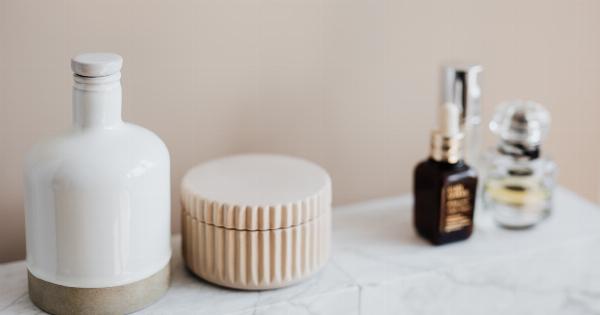Makeup brushes are an essential tool in every beauty lover’s collection. They help achieve flawless application and allow for seamless blending.
However, overtime, these brushes accumulate dirt, oils, and product buildup which can be detrimental to their performance and overall hygiene. Cleaning your makeup brushes regularly is crucial to maintain their quality, extend their lifespan, and prevent breakouts caused by bacteria buildup.
In this article, we will discuss the appropriate techniques to clean your makeup brushes effectively, without ruining them.
Why is cleaning makeup brushes important?
Cleaning your makeup brushes regularly is essential for several reasons. First and foremost, it helps remove dirt, oil, and product buildup that accumulates on the bristles after each use.
When you don’t clean your brushes, these residues can mix with your new makeup products and interfere with their performance. Moreover, the accumulation of bacteria, dead skin cells, and oils can lead to breakouts, skin irritation, and infections, especially if you have sensitive or acne-prone skin.
Furthermore, cleaning your brushes regularly ensures the longevity of your investment. Makeup brushes can be quite expensive, and proper maintenance can help extend their lifespan.
When brushes are not cleaned, the excess product and dirt can cause the bristles to become stiff, lose their shape, or even break. By incorporating a regular cleaning routine, you can protect your brushes, ensuring they remain functional and perform optimally for a longer period.
What are the common mistakes to avoid?
Before diving into the proper techniques for cleaning makeup brushes, it’s important to know what mistakes to avoid to prevent any damage or ruin to your brushes.
1. Using harsh cleansers or chemicals
One common mistake is using harsh cleansers or chemicals to clean makeup brushes. These can strip the bristles of their natural oils, causing them to become dry, brittle, and prone to breakage.
Avoid using products such as dish soap, alcohol, or bleach, as they can be too harsh on the brush fibers. Instead, opt for gentle, non-toxic cleansers specifically formulated for cleaning makeup brushes.
2. Soaking brushes for too long
Another mistake is soaking your brushes for an extended period. Extended soaking can loosen the adhesive that holds the bristles together, causing shedding or even complete detachment from the handle.
It is best to avoid leaving your brushes submerged in water for more than a few minutes.
3. Applying excessive pressure during cleaning
While it is important to thoroughly clean your brushes, it is equally important not to apply excessive pressure that can damage the bristles. Aggressive scrubbing or rubbing can lead to fraying, bending, or tearing of the brush hairs.
Always be gentle when cleaning, allowing the brush fibers to retain their shape and integrity.
4. Drying brushes upright
When drying your brushes, avoid drying them in an upright position. This allows water to seep into the ferrule, the metal part of the brush that attaches the bristles to the handle.
When water enters the ferrule, it can weaken the glue that holds everything together, causing shedding or even the complete detachment of the bristles. Instead, lay your brushes flat or hang them upside down to ensure excess water drips away from the ferrule.
How to clean your makeup brushes effectively?
Now that we are aware of the common mistakes to avoid, it’s time to focus on the proper techniques to clean your makeup brushes effectively.
1. Gather your cleaning supplies
Before you begin the cleaning process, gather all the necessary supplies:.
- A gentle brush cleanser or mild soap formulated for makeup brushes
- A clean towel or microfiber cloth
- A shallow bowl or container
- Warm water
2. Wet your brushes
Start by wetting the bristles of your makeup brushes under lukewarm water. Be sure to avoid submerging the entire brush as this can damage the handle and ferrule. Only wet the bristles, allowing the water to flow down and away from the handle.
3. Apply the cleanser
Squeeze a small amount of your chosen brush cleanser or mild soap into the palm of your hand or onto a clean surface. Gently swirl the damp brush bristles into the cleanser, ensuring that they are thoroughly coated.
The cleanser will help break down any product buildup, dirt, and oils present in the bristles.
4. Cleanse the bristles
Once the bristles are adequately coated with the cleanser, start massaging them using circular motions. Be gentle but thorough, paying extra attention to the base of the bristles where most of the product buildup tends to accumulate.
Continue massaging until the water runs clear, indicating that all the residue has been removed.
5. Rinse the brushes
After cleansing, rinse the brushes under lukewarm water, gently squeezing the bristles from the base towards the tips. Continue rinsing until all the soap or cleanser has been removed, and the water runs clear.
Ensure that no cleanser residue remains, as this can cause skin irritation or affect the performance of your future makeup application.
6. Gently squeeze out excess water
Once the brushes are rinsed, gently squeeze out any excess water using your fingers or a clean towel. Be careful not to twist or pull on the bristles as this can cause them to lose their shape or shed.
Repeat the squeezing process until the brushes feel damp but not soaking wet.
7. Reshape the bristles
Reshape the damp bristles with your fingers. Gently comb through them to remove any tangles or clumps that may have formed during the cleaning process.
This step is crucial to maintaining the brushes’ original shape and structure, ensuring optimal performance during future usage.
8. Lay flat or hang upside down to dry
When it comes to drying your brushes, there are two recommended methods:.
- Lay flat: Place your brushes on a clean towel or microfiber cloth, ensuring that the bristles are not touching any surfaces. This allows for proper air circulation, and the bristles can dry naturally while maintaining their shape.
- Hang upside down: If you have a brush holder with specific slots or hooks, you can hang your brushes upside down. This method allows any excess water to drip away from the ferrule, preventing damage to the adhesive. Ensure that the brushes are securely held and not in danger of falling.
9. Clean makeup sponges and puffs
Don’t forget about your makeup sponges and puffs! These tools also require regular cleaning to maintain their effectiveness and hygiene.
Dip the sponges or puffs in warm soapy water, gently squeezing and massaging them to remove product buildup and stains. Rinse thoroughly until the water runs clear, then squeeze out excess water and lay flat to dry.
10. Establish a regular cleaning routine
To ensure that your makeup brushes remain clean and in optimal condition, establish a regular cleaning routine. Aim to clean your brushes at least once a week if you use them daily.
However, if you use them less frequently, a cleaning every two weeks should suffice. By incorporating this habit into your beauty regimen, you’ll promote excellent brush performance and maintain healthy skin.
Conclusion
Cleaning your makeup brushes is an essential task that should not be overlooked. By following the proper cleaning techniques and avoiding common mistakes, you can effectively clean your brushes without ruining them.
Regular cleaning will extend their lifespan, enhance their performance, and keep your skin free from breakouts and infections. Remember, a clean brush is a happy brush!.
























